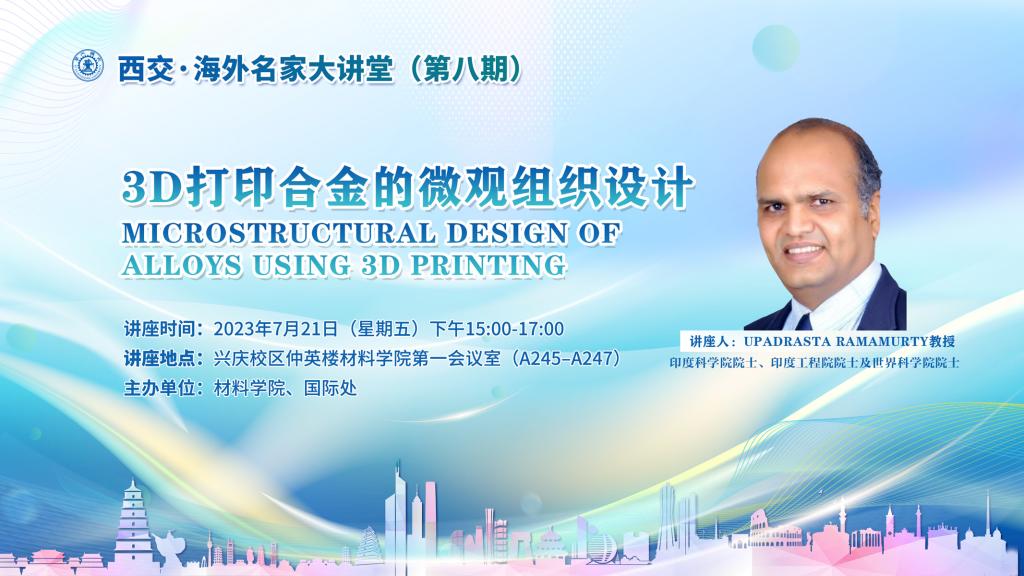
Invited Speaker:Prof. Upadrasta Ramamurty
【Title】Microstructural design of alloys using 3D printing
Time: 15:00 pm, July 21st, 2023
Location: Xingqing Campus, Zhongying Building, No. 01 Meeting Room
兴庆校区仲英楼 材料学院 第一会议室 (A245-A247)
Introduction:After obtaining a PhD degree from Brown University under the supervision of Professor Subra Suresh and post-doctoral stints at UCSB and MIT, Ramamurty held faculty positions at the Nanyang Technological University, Singapore and the Indian Institute of Science, Bangalore, India, before returning to NTU in 2018 where he currently holds a President's Chair Professor position. His research interests include deformation and fracture behavior of amorphous as well as crystalline alloys, additive manufacturing, and the development and application of the nanoindentation technique. He published 350 papers in peer reviewed international journals (with a current h-index of 78) and is an editor of Acta Materialia and Scripta Materialia. He is an elected Fellow of both the National Academies of Engineering and Sciences of India, and TWAS-The World Academy of Sciences, and is a recipient of the Scopus Young Scientist and National Metallurgist Day awards, Shanti Swarup Bhatnagar and TWAS prizes (both in Engineering Sciences category), and Swarnajayanthi and JC Bose National Fellowships. He delivered the CNR Rao Prize Lecture in Advanced Materials of the Materials Research Society of India and the Lee Hsun Award Lecture of IMR, Chinese Academy of Sciences. He was an Honorary Professor at Xi’an Jiaotong University, the International Centre for Materials Science, Jawaharlal Nehru Centre for Advanced Scientific Research, India and Qiushi Distinguished Visiting Professor of Zhejiang University, China.
Abstract: Additive manufacturing (AM) of metallic components offers a number of technological advantages such as near-net shape forming using a single processing step, flexible and on-demand manufacturing, near-zero material loss during fabrication, etc. Additionally, alloys made with AM techniques such as laser powder bed fusion (LPBF) have substantially finer microstructures (due to rapid solidification) and distinct mesoscale features. A synergetic interplay between these micro- and meso-structural features leads to high strength – toughness combinations. Additionally, the ‘bottom up’ approach of building components—line-by-line and layer-by-layer with in-situ alloying capability—enables design of new alloys. Implications of these in terms of possible directions for designing AM alloys with high mechanical performance will be discussed.


